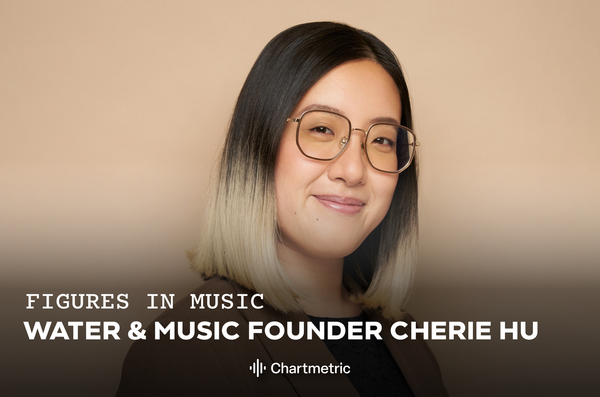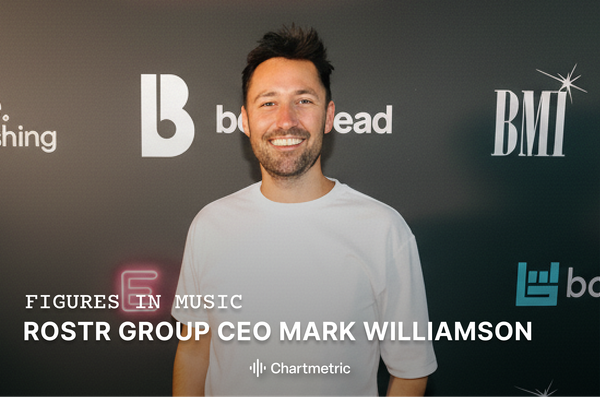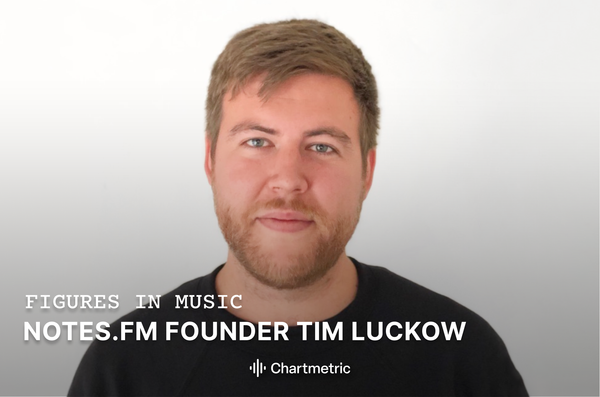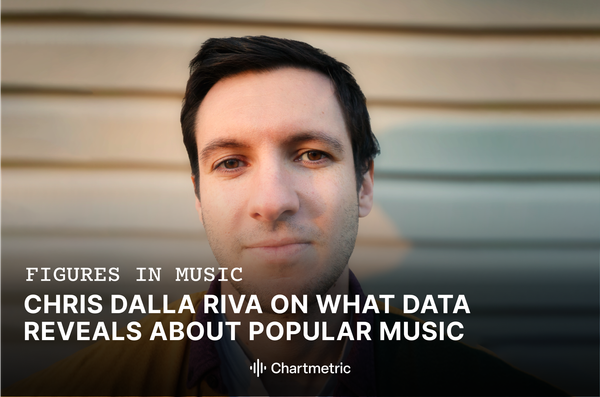Cherie Hu is the head of Water & Music, a premier research studio and consultancy at the intersection of music and tech. The platform hosts up-to-date information on how these two worlds are converging, including extensive datasets that create a real-time picture of business partnerships, the state of AI, and ascending startups poised to shake up the market.
Over the past few years, Hu has also been expanding a new consulting wing of Water & Music, where she assists music and tech brands directly in their business and innovation goals. Check out her full range of services and testimonials from satisfied clients on her services page and services deck. The entire research archive—more than 300 deep-dive analyses on the future of music tech—is now freely available with open access.
Read on to see how Hu gathers data to support her platform, her thoughts on newer industry trends like AI and private equity investments, and take a peek at how she thinks new businesses can succeed.
What advice would you have for your fellow entrepreneurs looking to build something in music?
My first piece of advice is around mutual respect. A lot of entrepreneurs go in thinking it all has to be disrupted. A lot of the disruptive visions of the industry are inspiring. But if you're building a product that ends up having to partner with the industry, that's not a very practical approach.
For example, a lot of startups think they're going to disrupt labels. But then they end up partnering with labels because they need their artists to get the right audiences. Instead, look to partner with the industry and empathize with the challenges and needs that they have.
My second piece of advice is: the more specific, the better. This applies to artists and anyone trying to market anything. If you don't know who your target audience is, it won't resonate as much.
For music startups, thinking about areas like rights management, superfan platforms, or marketing platforms as examples, each of those verticals is already quite crowded. So the more specific you can get on the problem you solve and how you solve it, the better. Start small and focus small.
Water & Music utilizes numerous datasets. How do you go about collecting all of it?
Our two flagship databases are our music tech investment database and our music AI database. It's a mix of automated and manual collection. We have a Google alert system automatically ingesting categorized news on key music tech investment announcements or exits.
We also pull from third-party databases like Crunchbase or Pitchbook. But we find that those aren't fully comprehensive in capturing the full scope of early-stage music startups that might raise funding.
A lot of great data I get from my LinkedIn feed. I wish I had a more sophisticated system, but a lot of startup news and venture news is shared on social media. There isn't really a news article about it, or an official document about it.
For music AI, our database has different tabs that have different methods of collection. We track apps: consumer-facing apps that anyone can use. We track models: the underlying technology or underlying generation processing models that are powering these apps. We track training data sets whenever they're made public, which is not super often, but does happen in the research world. Then we track AI news.
So each of those has very different methods. The model side is almost fully automated. We draw from a site called arXiv. That's the main academic paper repository. There are thousands of audio AI papers coming out every quarter. We have systems for summarizing those and grouping them into themes. Then we'll go in and curate the most important ones for our audience.
AI news is similarly automated through Google alerts and tagging. The AI app aggregation work is almost entirely manual in part because there are so many new startups that might not be on the radar of Crunchbase or Pitchbook.
We have an analyst known as Yung Spielburg helping with this data collection — he’s tried virtually every AI tool out there, and uses that firsthand experience to inform a lot of the research we do.
The numbers we track are on the investment side. How much money has been raised? What is the average deal size? How many startups are in each vertical? On the AI side, we track user numbers and revenue whenever we can get it. So to differentiate it from Chartmetric, we're tracking more industry deal activity versus consumer activity.
On W&M, you’ve discussed how private equity and other non-music companies are investing in music. How do you think this is affecting the cultural landscape of music? For example, the private equity firm KKR owns a handful of UK festivals, but artists have backed out of those festivals because they disapprove of KKR’s other investments.
These larger festival brands feel a lot of pressure to keep getting bigger, having tickets be more expensive, and getting bigger people on the lineup. So, it's the natural next step to bring in private equity money. But there's definitely a risk of that going against the cultural roots of the festival.
The word that directly addresses this question is “incentives.” If you see a deal that doesn't make any sense, it's always useful to think about the incentives of the players involved.
Spotify’s incentive as a public company is to deliver value to shareholders, to get the most subscribers, and keep them subscribed. That's very different from a major label, which is to maximize the value of their catalog, to keep signing artists, and signing hits.
That is also different from a lot of artist incentives. They're not trying to maximize catalog value in an industrial way. They are thinking about their livelihoods. They want to spend as much time making music as possible. So, even within the music industry, different players have different, often competing incentives.
Expanding that to companies beyond music amplifies it even further. There's a lot of concern around private equity increasingly going into the music industry. The finance world incentives, especially thinking about private equity, are in the business of maximizing efficiency, and being very ruthless about that with the companies that they own. I think that has quite a big, potentially negative, or unexpected impact on culture, which the music industry might push back against.
Given your extensive knowledge of the music and tech landscape, where do you think music and tech will go in the next few years?
Vibe coding apps like Lovable, Cursor, and Bolt allow you to use natural language to code apps or websites. It's super impressive. People are vibe coding apps for either personal or professional use that they could only dream of using. You can use these apps without any coding experience.
So, not even just thinking about music, the business of making a business is changing. It's easier than ever to build solutions with the help of AI tools. That could apply to issues that have been plaguing the music industry for decades.
There are some really interesting AI tools coming out around marketing. How can you automate a lot of the things around marketing and social media as an artist, so you can focus on making your art?
The traditional power structure in the industry is going to be questioned more than ever. People have been questioning the role of labels for a very long time. As artists sign more temporary deals and take more of the reins for marketing and fan engagement with a new generation of tools, labels are going to have to keep asking the question: What value are we really providing here?
Especially with generative music AI, a big question for artists is “What am I really bringing to the table?” I think there will always be demand for creative visionaries who can communicate a deep, relatable, personal, inspiring, and human message through music and art, especially in this tumultuous time for society. But the economics of how those messages are written, shared, and built upon are going to change on a fundamental level.






